- More body style configurations are available on the 2025 eSprinter.
- The starting price is lower thanks to a new standard battery, but with less range.
- You'll find new driver assist features too.
2025 Mercedes-Benz eSprinter First Drive: Electric Worker Bee Adds Features
The Mercedes-Benz eSprinter is essentially the large cargo/passenger van many know and love, but now with an electric powertrain. Mercedes introduced it for the 2024 model year and is now adding new versions to the eSprinter lineup for 2025. While the eSprinter costs significantly more than a comparable diesel-powered Sprinter up front, electrification comes with the long-term benefits of fuel savings and potentially simpler and less costly maintenance. That's enough to make it a compelling option for small-business owners and fleet operators.
Am I Ready for an EV?
- EV ownership works best if you can charge (240V) at home or at work This typically means a 240V home installation, but you could also have a similar setup at your office or other places your car is already parked for several hours each day. Don't expect a regular household outlet (120V) to suffice unless you've got a plug-in hybrid, in which case overnight charging at home is feasible.
- If you can’t charge at home, charging at a charging station could take at least 10x longer than at a gas station With public charging infrastructure still in its infancy, the user experience can be maddeningly inconsistent. Tesla owners tend to rave about the reliability and speed of the company's proprietary Supercharger stations, but rival DC fast options have thus far been plagued by technical issues and overcrowding. It's an evolving landscape and our best advice is to do your research on the available options for the EV you want to buy.
- Adding a 240V home charging system could cost up to $1,600 or more If your existing electrical service can handle the additional demands of EV charging, you may be able to add Level 2 charging at home for less than a grand, including installation. But your costs will multiply if you need to upgrade your electrical panel or add a dedicated circuit.
What's new for the 2025 eSprinter?
Previously, the eSprinter came exclusively in the 170-inch long-wheelbase, high-roof configuration fitted with a battery pack with a usable capacity of 113 kWh. That's still available for 2025. In addition, the 2025 eSprinter is now available with the van's shorter 144-inch wheelbase and standard-height roof. This version also comes with a smaller battery with a usable capacity of 81 kWh.
How much power and range does the eSprinter have?
The electric motor that drives the eSprinter's rear wheels produces 134 hp in standard output form, or up to 201 hp for the high-output motor. Torque for either motor peaks at 295 lb-ft, which is the important number for low-speed city street duty. That's pretty comparable to the power produced by the regular Sprinter's four-cylinder diesel engine, though the eSprinter is heavier because of the batteries.
There aren't any EPA range estimates available just yet, but we'd estimate somewhere around 120 miles for the small battery vans and up to 250 miles for vans with the large battery.
For charging, the eSprinter can accept Level 2 charging at up to 9.6 kW and comes standard with DC fast-charging capabilities at up to 50 kW. While this should suffice for most overnight charging scenarios, if you need to charge on the go quicker, you can upgrade to 115-kW DC fast charging. With the faster charging, Mercedes-Benz estimates a charge time of 42 minutes and 32 minutes, respectively, for the large and small battery to take you from 10% to 80% battery state of charge.
How does the eSprinter drive?
In general, it drives a lot like a regular Sprinter van fitted with the available high-output turbodiesel engine. The diesel has a torque advantage on paper but there is noticeable delay before it delivers full power. Torque from the eSprinter battery, however, is instant and allows for smoother acceleration, especially in stop-and-go conditions.
Braking is another differentiator. There are five settings of brake regeneration so the driver has options as to how much assistance the van offers. In its most aggressive level, D Auto, the vehicle will automatically brake based on traffic and road conditions. We liked using this mode when going downhill. But in traffic, the braking was unexpected and disconcerting.
There are also three drive mode options: Comfort, Eco and Max Range. Comfort offers full power. Eco mode reduces climate control use and softens the acceleration curve for the standard motor, while it limits drive power to 67% for the larger motor (about 134 hp or 100 kW). Max Range goes full turtle mode, dropping power to 80 kW for either motor (about 107 hp). It's slow, but it's efficient.
How's the interior?
Not a lot has changed on the interior for 2025 model year eSpinter. The cabin still is clearly one of a work van and, just as obviously, a Mercedes-Benz. Large areas of hard plastics cover the dash and door panels, all seemingly durable and easy to clean. Storage nooks, pockets and even a set of questionable cupholders by the front windshield reinforce its functional design.
Soft elbow pads on the armrests add a touch of luxury and comfort, as do the seats. And now you can opt for a heated seat for your front passenger, in case you aren't always driving solo. Primary controls for temperature and fan speeds are buttons and toggle switches built to a quality finish.
How's the eSprinter's tech?
There are more tech options available in 2025 that greatly enhance the safety and driving experience of eSprinter. You can now outfit eSprinter with a host of advanced driver aids including adaptive cruise control, lane keeping assistance and traffic sign recognition as well as a 360-degree surround-view camera, which significantly eases the stress of maneuvering through tight spots. We also love the digital rearview mirror, particularly for vehicles of this type that would otherwise have to rely solely on sideview mirrors to see what's behind you.
Mercedes-Benz's excellent MBUX infotainment system remains an option in eSprinter, and it's been improved for 2025. The 10.25-inch wide display remains in its prominent place on the van's dash and can be managed with touch controls on the new multi-function steering wheel or by voice control. The system features faster computing power and improved menu navigation now certain voice-controlled functions no longer require the use of a "Hey Mercedes" wake word prompt. The MBUX system serves as a the hub for Mercedes me connect, a subscription service offering features like remote access to charging data, climate control preconditioning, navigation route adjustments based on current battery range, and a prepaid charge card for in-network EV chargers.
What about payload and towing capacities?
If you're looking to maximize payload capacity, the eSprinter with the smaller battery and the shorter roof and wheelbase accommodates up to 3,516 pounds. If you need more space but don't need maximum range, then the tall-roof, long-wheelbase eSprinter with the small battery might suit you with up to 3,120 pounds of payload capacity. If you need the range to live out your best "van life," the larger battery will drop your payload limits to 2,624 pounds because, hey, batteries are heavy. Cargo space ranges from as little as 319 cubic feet to as much as 488 cubic feet. Maximum tow capacity for the eSprinter ranges from 5,000 pounds (small battery), which now matches the diesel Sprinter, to 4,277 pounds (large battery).
Edmunds says
The new configurations and options for the 2025 eSprinter make it more suitable to a wider range of customers. It's still slightly less capable than a regular Sprinter for maximum hauling, but we think electrification improves the driving experience overall and we would prefer it if we were primarily operating within city limits.
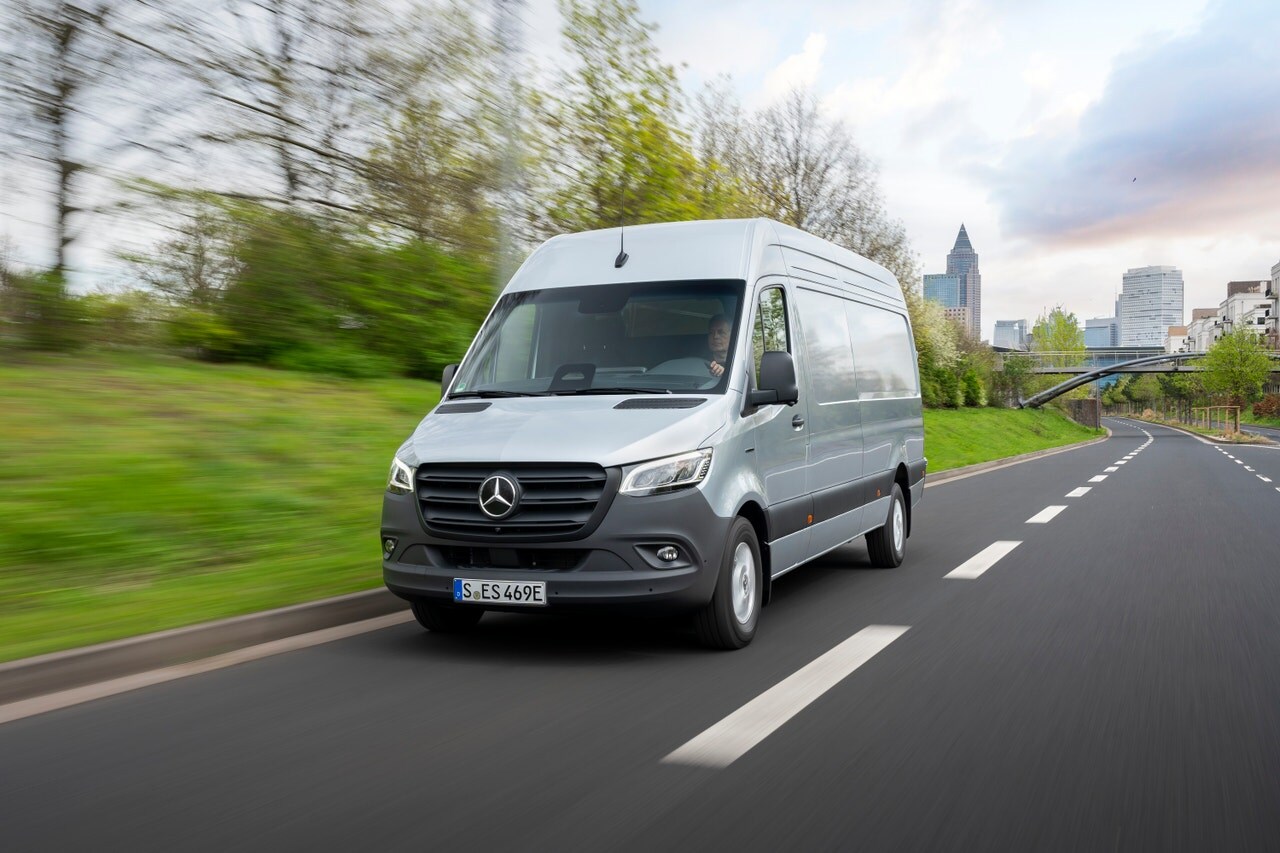
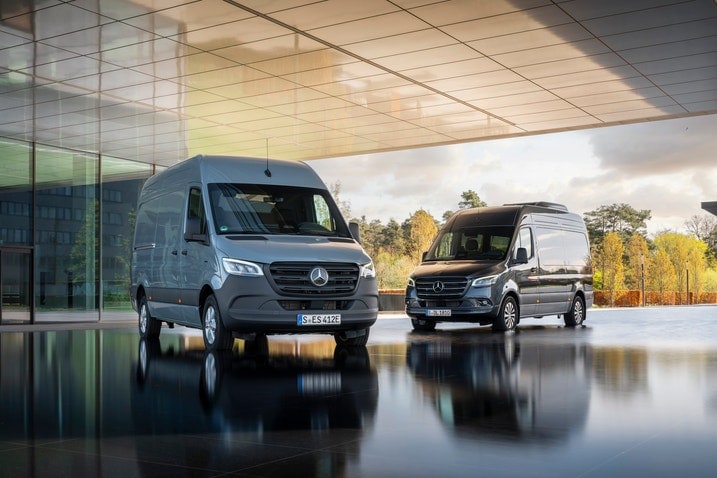
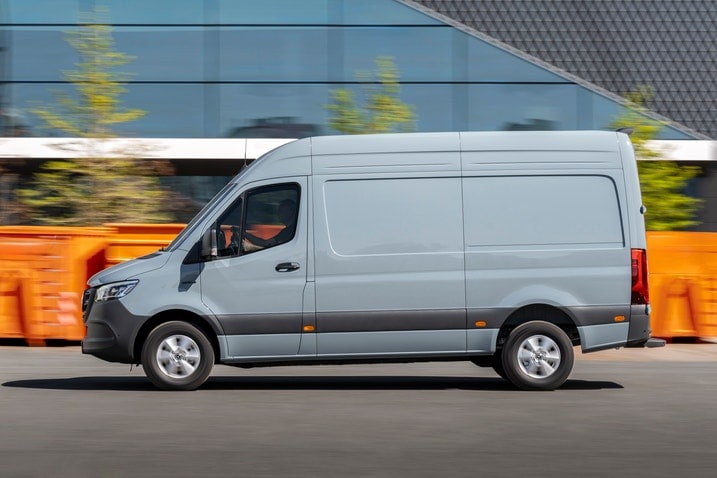
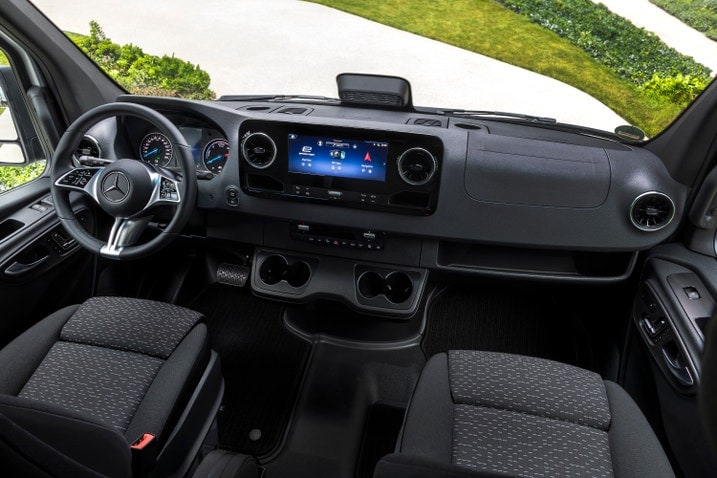
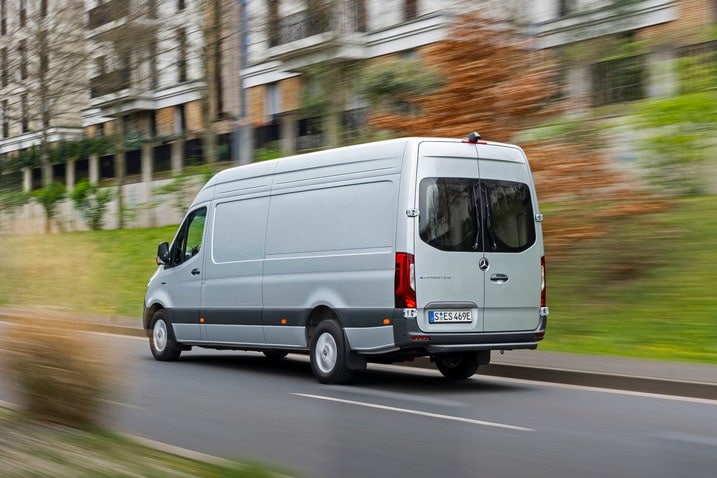
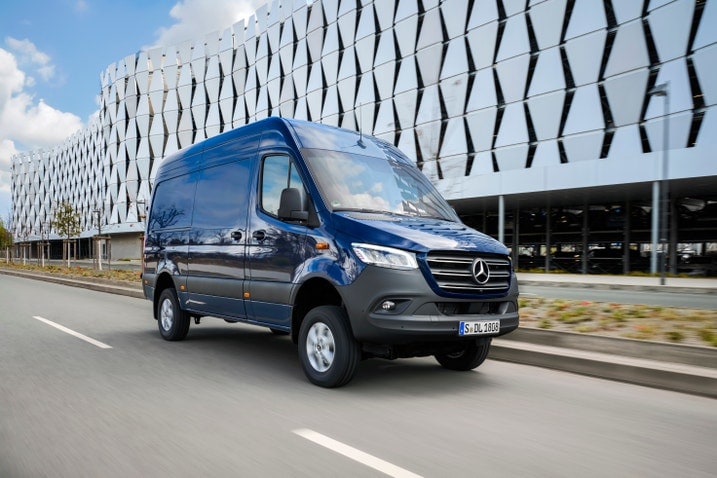
 by
by